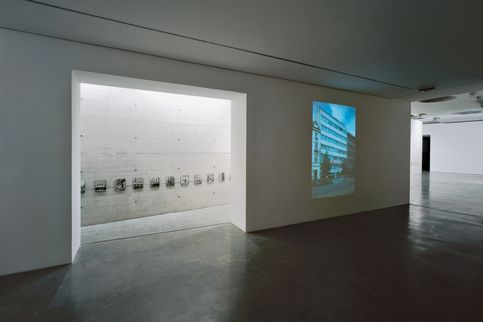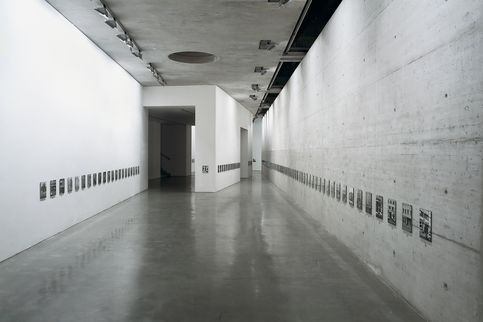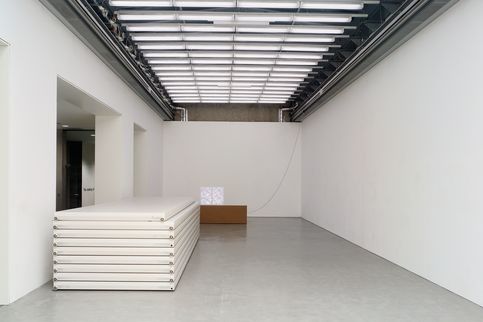The making of
Organized by: Mathias Poledna
Exhibition Production: Isabella Marte, Daniela Stern, Nadja Wiesener
Works by Simon Leung, Dorit Margreiter, Nils Norman, Mathias Poledna.
A consistent feature of the Generali Foundation exhibition program was the presentation of project-oriented artistic work. The artist Mathias Poledna was invited to develop an exhibition within this context. "The making of" traced the contours of an alternative space of cultural production through a sequence of motifs. The starting point for the artistic work was an understanding of "institution" as a symbolic territory within which competing and overlapping definitions of culture are articulated.
Artworks specially developed for the exhibition investigated these concepts, working through economic, social, and public representation making visible new perspectives on social conventions and their raw materials. In this way, the individual contributions could be read as provisional openings breaking through the exhibition space of the Generali Foundation, a space which was void of windows and façade. The spectrum of artistic approached ranges from the "recording" of reality to the creation of alternative or fictional scenarios. Architecture was one of the motifs that the different projects set within a common reference system of critical confrontation, in view of a possible economic use of exhibition spaces, which are conceived as commercially neutral.
A central element of the exhibition's structure was the exhibition space’s dismantled ceiling cover. Its exposure directed one's view to the normally concealed organization of lighting fixtures, reinforced concrete beams, and the overlying glass roof, the actual outer façade. At the same time, the omission of diffused membranes allowed the room to appear in a different, less homogenous light. In contrast to comparable works within "institutional critique" of the seventies, the intervention functioned here foremost as a display which marks out the frame for the artists' individual contributions.
Simon Leung's contribution began with the real estate of the Generali group and the economy related to it. His photographic stock-taking of the buildings owned by the insurance concern, whether standing or yet to be built, documented them as a "collection," which follows its own logic of property security and utilization. The squatting figure of the artist in front of each building had made reference to "squatting" as a classification characteristic of cultural difference within traditional ethnography while at the same time showing another model for taking possession of public spaces.
In Dorit Margreiter's work, she developed a proposal for a late-afternoon television series set in the milieu of an art institution. The scenario linked into the pre-existing socio-top found at the Generali and from that, designed a series of fictional characters whose respective identities define the professional and private interweave of the narrative scope. In a sketch for a series, which was presented in the form of a trailer, the fundamental ability to mediatize social formations shined through with the field of art as a (not yet) exploited mainstream-compatible ambience.
Nils Norman's project worked with the given spatial conditions as a frame for a potentially realizable re-dedication of the building into a (utopian) work model. The proposals for a micro-farm based on hydroculture, an experimental light-therapy clinic, an indoor environmentalist training/design center with a second hand office furniture shop and L.E.T.S. (Local Exchange Trading System) registry, refered to possible gaps within economic structures. Within the framework of a "backyard economy," the potentials for emancipation that could be found were also continuously linked to a transformation of the existing order on a grand scale.
The contribution from Mathias Poledna did "superimpose" the given institutional structure onto Milan's "Fondazione Feltrinelli," an archive and study center for the history of socialism and the labor movement. The documentary-style video follows along the historical ambivalence of constructed analogies and contrasts the scientific autonomy that the "Fondazione" claims to have from the political, with the actual person of its founder; the publisher Giangiacomo Feltrinelli, an active supporter of the seventies’ militant left.
Participating artists:
Simon Leung (born in 1964),
Dorit Margreiter (born in 1967),
Nils Norman (born in 1966
Mathias Poledna (born in 1965)





